Gastropod Life Styles 101: Where Do Snails Really Live?
Gastropod life styles (their ecological choices) often reflect the habitat they live in. As gastropods live in nearly every habitat on this planet, this has resulted in them evolving a huge diversity of ecological traits.
Therefore it is difficult to say much that applies to the whole group. The diversity and creativity of the gastropod lineage is something you could spend your whole life studying. On this page you will find an introduction, plus some snapshots on the lives of a selection of gastropods from various habitats.
Do Snails Sleep?
One commonly asked question is do snails sleep? Actually, many folks ask about slugs too. The answer is that in most cases we don’t know for sure. However many people who keep snails have noticed that they exhibit periods of resting inactivity throughout the day. In my own studies of Pomacea maculata I found that it often retreated to a protected corner of the tank. This was usually after feeding, during this time it simply did nothing for 30 minutes to an hour.
Scientific research has been done on the Common Pond Snail (Lymnaea stagnalis) and the conclusion was that yes, they do appear to sleep. Also, Mathew Walker, in his very interesting book “Why We Sleep” states that “sleep has been observed in every animal species in which it has been looked for”. I may add here, that has a post graduate student I used time-lapse photography to record regular periods of ‘sleep like’ rest in small ants. During these time the whole colony would gather together and do, from my perspective, nothing.
Where Do Snails Live?
Gastropods live nearly everywhere, from mountain tops to deserts. From forests to grassland, from tropical forests to the arctic ice lands. They are happy in tiny streams and great rivers, in bogs and lakes all around the world. In marine habitats they are found from the seashore through the sublittoral all the way down to the abyssal depths. A few species live in the open ocean, floating across the surface of the ocean on a raft of bubbles. They also live in underground caves and high up in the tree canopy, buried in the ocean floor or deep in the soil. Parasitic species live on, or even inside, other animals.
Some species are very widespread, and some have become invasive pests as a result of human transport. But others live in very restricted habitats. Some habitats support a wide diversity of species others have lower diversity. In terrestrial environments dry deserts and arctic habitats support fewer species. In the oceans the greatest diversity is in the shallower coastal waters with the open ocean having the lowest diversity.
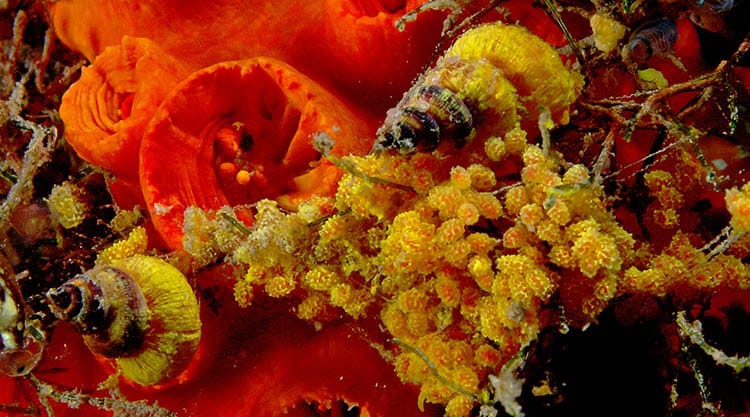
Where to Find Snails
In the oceans, and other aquatic habitats the deeper zones support both fewer numbers and species that those areas where the sun supplies some energy. Coastal areas with diverse rocky habitats and a good range of sea weeds will be the best place to find a range of marine gastropods. Many species live in the intertidal zone though you will have to dive a little to find the larger species.
For all terrestrial species water is always a concern and those that live in dry, or drier habitats have evolved special ways of conserving moisture. Snails build their shells out of calcium carbonate, access to calcium is an important limiting factor for them. Environments rich in both moisture, and calcareous soil (from rocks like chalk, limestone and marble) usually support both greater numbers and greater species diversity than less favourable habitats.
Which country you live in will affect the diversity you can find. Palestine a warm, small and relatively dry country lists only 42 species of terrestrial gastropod among its fauna. The UK, a cooler, slightly larger and much damper country boasts about 99 species while Brazil, a very large topical country with plenty of rain has 700 species known to date.
Gastropod Life Styles and Dormancy Strategies
Some gastropods have short, annual life cycles (see gastropod life cycles) and survive the winter as eggs in cooler climates (e.g. Lehmannia marginata), but many others live for two or three years and need to survive inclement weather as adults.
Terrestrial species that live in habitats that are particularly inhospitable through certain times of year survive through dormancy strategies. Digging down deeply into the soil or sealing themselves up inside their shells and sleeping through the worst extremes of the weather. When this is done to avoid the cold, i.e. winter, it is called hibernation. When it is done through the summer, or the dry season in the tropics, it is called aestivation.
Aestivation
Aestivation is an ecological life style change that occurs in response to environmental conditions of extreme (from the species point of view) dryness. This is particularly seen in terrestrial gastropods but also in species of Pomacea that live in areas that are flooded for only part of the year.
During aestivation slugs and snails seek out a protected place and then seal themselves off from the world. Snails obviously retreat into their shells. They then loose some water and seal the opening of the shell, with an operculum if they possess one, or else with a film of fried mucus. Pomacea species dig down in the soft earth as the water retreats and spend the dry season hidden below ground.
Slugs will find a secluded place, perhaps beneath a rock or some dead wood. They then contract their body to become small before secreting a cocoon of dried mucous all around themselves. Inside this cocoon they will shrink their body some more before becoming inactive.
During aestivation slugs and snails reduce their metabolic activity and change their biochemistry. Only a few species have been studied intensely, and they show similar but varying changes. Giant African Land Snails, in a laboratory conditions, were recorded to reduce their heart rate by 85 %, their oxygen consumption rate by 83 % and their blood sugar level by 50 %. Conversely the concentrations on Ca++ and Mg++ ions in the tissues were increased by 50% and 34%, respectively, while the amount of haemolypmh protein was increased by 33 %.
During a period of aestivation a gastropod can lose as much as 50% of its body weight.
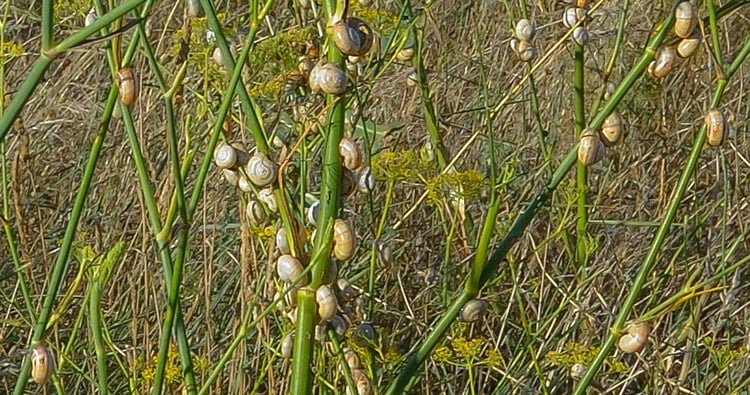
Hibernation
Many animals move to avoid the extremes of winter, travelling towards the equator, or down the mountains to lower altitudes to find habitats that are easier to live in while winter rages. However gastropods live in the slow lane of life, a migratory life style is not practical for such animals. So what do they do when the chill comes in?
Hibernation is a general term for a period of dormancy during the colder parts of the year, and is a survival strategy used by many animals that live in areas where winter is inhospitable due to either latitude or altitude. While terrestrial gastropods prefer damp warm habitats evolution has driven many species to adapt to the requirements of chillier times, especially in the oceans.
As winter approaches terrestrial gastropods seek out secluded and protected areas in which to hibernate. They seal up their shells with their operculum or a film of dried mucus and reduce their metabolic activities to a minimum. Often, if you know where to look you can find groups of snails sleeping together.
From the perspective of ectothermic animals (those that have a body temperature the same as their surroundings) subzero temperatures can be a big problem. Water expands when it freezes. If the water in an animal’s body freezes the water crystals can shatter cell membranes throughout the animal’s body and kill it.
Two Different Strategies
Like many other invertebrates terrestrial gastropods exhibit two main strategies in order to avoid dying when the world around them is a frozen wasteland. These are called “freeze avoidance” and “freeze tolerance” by scientists. Freeze tolerant species have evolved to survive their tissues being frozen, whereas freeze avoiding species have found methods of keeping their body fluids liquid at sub zero temperatures.
Species that avoid having their tissues frozen try to remove all ice-nucleating agents, including bacteria and certain proteins from their tissues. Freeze tolerant species do not do this. Freeze avoidance only works down to temperatures of about -20 °C, after that death usually results somewhere between -20°C and -40°C. In comparison freeze tolerating species can usually survive body temperatures of -40°C and often even lower. Scientific research has shown that size is a strong determinant of survival for both strategies with larger individual surviving lower temperatures better than smaller individuals. This is because larger bodies cool more slowly, giving the animals more time to initiate important physiological changes.
Both these strategies involve the use of polyols and sugars and then antifreeze proteins (APFs), sometimes referred to as Thermal hysteresis factors (THFs).
Among gastropods all the fresh water and littoral marine species studied practice freeze tolerance. Contrarily all studied terrestrial species practice freeze avoidance, with two species known to survive partial freezing. Terrestrial species however try to mitigate the most severe temperatures by finding secluded areas to hibernate in, some will even bury themselves in the ground.
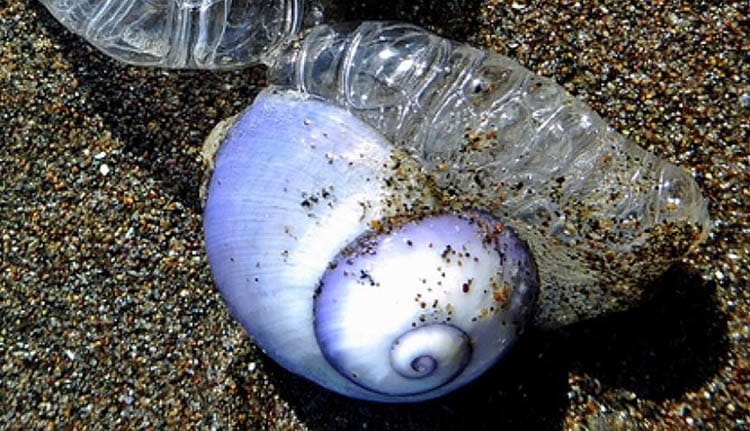
Unusual Gastropod Lifestyles:-
The Open Ocean (Marine Gastropods)
Believe it or not there are snails, with shells, that live and forage far out on the open waters of the world’s oceans and seas. Such snails, that live their entire lives in the open water are called ‘pelagic’. Some of the larger species travel by raft. They make themselves a raft of bubbles, these bubbles are created out of mucus secreted by the animals foot. Many however, are very small and float in the water as a result natural neutral buoyancy.
Pelagic snails can be either floaters or swimmers, swimmers have a modified foot that they can use to swim actively. Purely floating species live entirely at the mercy of the wind and the ocean currents. Most species live in the top 10 to 20 meters of the ocean, but a few species indulge in vertical migrations and may be found as deep as 700 meters at certain times. A number of species possess a shell for their whole life, others lose their shell during metamorphosis.
Pelagic snails can be either herbivorous, feeding predominantly on phytoplankton, or carnivorous. Many carnivorous species feed on zooplankton smaller than themselves, but some of the larger species such as the beautiful bubble rafting Janthina species are predators of pelagic Cnidaria such as jellyfish and siphonophores and will attack animals larger than themselves.
Generally pelagic snails are divided into two taxonomic groups and currently amount to about 457 species. The Pterapoda, which contains most of the species – 409, and the Pterotracheoidea commonly called Heteropods. This latter group should not be called the Heteropoda as they are in some older works because this name is reserved for a group of huntsman spiders. New species are regularly being recorded.
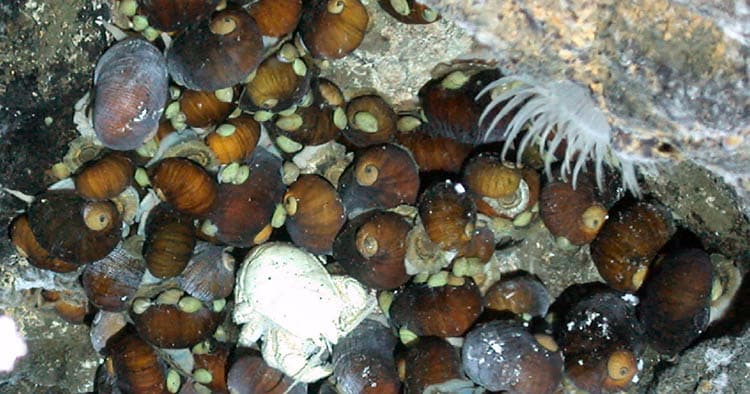
Hydrothermal Vents and Oceanic Seeps
Hydrothermal vents and Deep Sea Seeps are two ocean habitats that are quite opposite to the surface water occupied by pelagic snails. They are both located on the sea floor and both involve steady input into the surrounding waters of carbon and sulfur rich minerals. Both are usually located in deep water beyond the reach of any sunlight, many are very deep, kilometers below the surface. Two big differences distinguish them, Hydrothermal seeps are hot, at their core sometimes boiling while seeps operate at the same temperature as the surrounding waters. Hydrothermal vents are also relatively shorter lived than seeps.
Their similarities lie in their introducing into the water around them a constant source of chemically rich nutrients, usually heavily flavoured with sulfur. They also both support diverse colonies of unique creatures that are dependent on chemotrophic bacterial for all their energy. These are the only places on earth where the sun is not needed and where it is not the primal source of energy for living organisms. Even deep ocean detritivores are feeding on carbon compounds originally made available by plants working with sunlight, but not so those living in these strange and harsh environments.
The fauna of these habitats is mostly comprised of Pogonophoran worms, crustaceans and molluscs in the form of bivalves and gastropods. Among the hundreds of species of gastropods the largest group are limpets but there are also many coiled shelled snails present and new species are regularly being described. Some species are dependent on colonies of chemoautotrophic bacteria that live by oxidising methane and sulfur, a smaller number live as predators. All are blind.
The most famous of the hydrothermal vent snails is the Scaly Footed Snail (Chrysomallon squamiferum). More recently (2015) another similar sized (5 cm across) species Gigantopelta chessoia was described from two hydrothermal vents in the Atlantic. This species, which lives at depths of more than 2,500 meters, has an enlarged heart, and as an adult an enlarged oesophageal gland which houses the symbiotic bacteria that keep it alive. In areas where it lives it can be very numerous, up to about 1000 individuals per square meter.
Cave Habitats
Caves are fascinating habitats and a surprising number of creatures have evolved to live in the permanently. An even larger group of organisms have evolved to live in caves part time, using the cave for one reason or another. Species that have evolved to live permanently in the darkened interior of caves are called ‘troglobites’ or ‘troglobionts’. In comparison, species that make only part-time use of caves are called trogloxenous. As well as gastropods, such trogloxenous species include bears, insects, spiders, bats and human beings.
There are not many true troglobiont snails in the world, about 500 all told, 450 of which are freshwater species. In Turkey scientists have recorded 49 species of gastropoda from caves. Of these only seven are fully cave adapted troglobiont species. The other 42 are trogloxenous. According to the 2019 publication of The Encyclopedia of Caves all troglobiont snails are pulmonates except for Pholeoteras euthrix.
Species that live permanently in caves usually have special adaptations to this environment. These include a lack of eyes and a lack of pigmentation. The latter means they are usually clear or white in colouration. Cave snails also have increased sensitivity to changes in temperature and humidity and a high starvation tolerance. High starvation tolerance is scientist speak for “they can live a long time without having much to eat so long as they get a good meal now and then”. Furthermore most troglobiont snails are small, and many more species probably await discovery and description.
Many cave snails and other invertebrate troglobionts) are endangered because they have very limited distributions, sometimes as small as a single cave.
Some Specialist Troglobionts
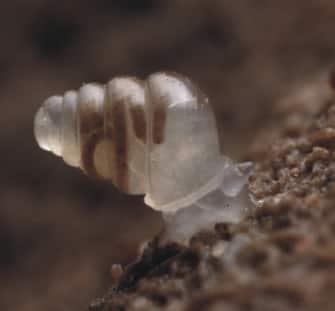
Hadopyrgus ngataana is an example of a cave dwelling snail with a very limited distribution, less than one hectare. It is a tiny snail, only 1.7 x 1.2 mm in size and was only discovered in the 1970s. It only lives in one pool in a stream at the entrance of Maitai Cave, in the Maitai River Valley on the South Island of New Zealand. Ngataana is the Maori word for slugs and snails. Because of its small size and rarity nothing is know of its ecology.
Zospeum tholussum is a true troglobiont species of air-breathing land snail from Croatia. It is a very small species, with a shell height of less than 2 mm (0.08 in) and a shell width of around 1 mm (0.04 in). The species is known only from a single cave, shells were found from a depth of 743 ms to 1392 ms below sea level (the entrance to the Lukina Jama-Trojama cave system is 37 ms above sea level, so it lives a long way underground. So far, only a single living specimen as been found.
On 22 May 2014 International Institute for Species Exploration declared Zospeum tholussum as one of the “Top 10 New Species of 2014” from all the species discovered in 2013. It has not been given an official common name, so I just call it the Lukina Deep Cave Snail. Other species of Zospeum have been found to be protandric hermaphrodites, possess greatly enlarged kidneys and a specially adapted penis that allows for rapid mating.
Other troglobiont snails from include The Tumbling Creek cave snail (Antrobia culveri) from Missouri USA, and Renouard’s Cave Snail Laoennea renouardi, known only from two caves in Laos, which is only 1.80 mm tall and is named after the French caver, Louis Renouard.
Soil As A Habitat
Living in, rather than on, the soil, or in the leaf litter zone, is an unusual life style choice for gastropods. Nevertheless some species have learned to live with the worms and other soil loving creatures. As well as these few specialists there are many surface foraging and mating species that will retreat deep into the soil to survive inclement weather, particularly slugs.
Among the few true soil dwelling gastropods is Cecilioides acicula a snail that spends its whole life buried in the soil. It is a native of temperate Europe. However, because it is a soil dwelling species, it has been accidentally introduced to a number of other countries (in potted plants). These include Australia, Bermuda, Canada, New Zealand and the USA.
Commonly called the ‘Blind Awlsnail’ it is a relatively small species, up to 5.5 mm long and only 1.2 mm wide. Its long thin shape is an adaption to living in the soil. Other adaptations for a subterranean life include being blind and colourless. Its shell is a transparent and glass-like.
Arctic Habitats
Technically Arctic habitats are all of the Earth north of the Arctic Circle, approximately 66 degrees, 34 minutes North Latitude, and all the parts south of the Antarctic Circle 66.4 degrees south.
As might be expected relatively few snails can survive the rigours of the artic zones. The vast majority of arctic gastropods are marine, and those species which live along seashores that freeze are all freeze tolerant. However there also some freshwater and terrestrial species. All known terrestrial species practice freeze avoidance. Such species survive winter by burying themselves as deeply as possible whilst the ground level supports snow and ice.
To date around 104 species of freshwater gastropod are know from within the arctic circle. The most species rich area in the arctic is Siberia, and the lowest diversity is found in North America. The most northerly record for a freshwater snail is held by two species of Sibirenauta (S. elongata and S. sibirica) at 73.5 degrees north. These two incredibly tough snails can be found in Siberia, Alaska and Northern Canada as well as on Wrangel Island
As explained above freeze avoidance only allows slugs and snails to survive temperatures down to about -20 °C. If they get colder than this they risk death. However, once they are buried a little beneath the soil surface temperatures are much more stable and do not reach the extremes experienced at the air-soil interface.
Studies done at latitude 70 degrees North in Norway have found 16 species of terrestrial gastropods in inland habitats and 30 species in coastal habitats. In northwest Europe thirtyfive species of terrestrial gastropods are recorded from north of the Arctic Circle and 44 species can be found at altitudes higher than 2000 m. In Canada, about 30 species live at high altitudes in the Rocky Mountains and in arctic provinces.
An extreme terrestrial snail from the southern hemisphere is Notodiscus hookeri which lives on subantarctic islands such as the Crozet Islands the Kerguelen Islands and the Prince Edward Islands.
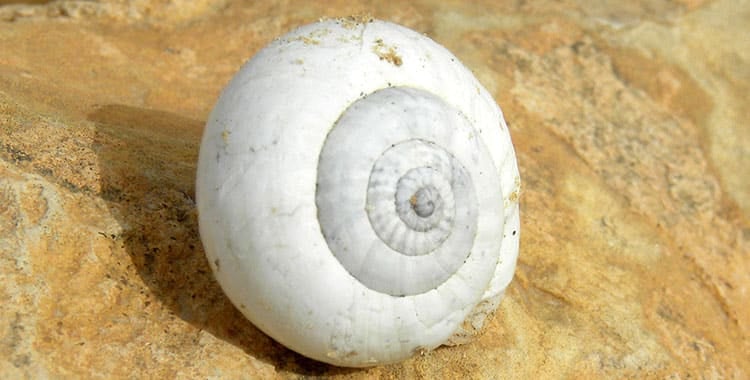
Desert Habitats
As strange as it may seem there are many species of snails that inhabit deserts. Deserts are hot dry habitats and snails are lovers of warm moist habitats. Nevertheless in some deserts snails are easy to find. Why snails chose to live in deserts is little understood. Presumably the relevant ecological adaptations that allow them to thrive in such habitats occurred slowly over time as either their previously more congenial habitat changed, or as competition forced them to move into more and more extreme environments.
However, how they survive is better understood. Generally speaking desert snails have smaller shell openings, thicker shells, and a thicker epiphragm, operculum or clausilium. Some species also have highly reflective shells.
Desert Survival Mechanisms
In most snails the opening of the shell is the widest part of the shell, however in most desert snails this is not so. For example in Coelocentrum gigas from Guatemala the opening of the shell is approximately only 2/3s as wide as the diameter of the previous whorl. Reducing the area of the shell opening obviously helps the snail to reduce its water loss.
Reflectivity is a second shell adaptation that greatly assists snails to exist in these circumstances. A shell that reflects, rather than absorbs sunlight prevents a great deal of the over heating that a more usual snail would experience in the same situation. Some desert specialists have shells that reflect at least 90% of the warming radiation (which includes, but is not limited to daylight). Other shell adaptations involve the shell being generally thicker and heavier, thus offering better insulation and a having a thicker lip which facilitates a better seal in species that cement themselves with mucous to the substrate.
Snails have three ways of sealing shut their shell. They can possess either an operculum or a clausilium, calcareous structures that act like doors, or they can build themselves a dried mucous epiphragm. Any individual species of snail will only use one of these methods to shut up shop. However whichever method they use, sealing themselves inside their shell is an excellent way of avoiding desiccation during times of inactivity, either resting or aestivating.
A Real Desert Survivor
Among the the most expert of desert survivors is Sphincterochila boissieri from the deserts of Egypt and Israel, an area considered uninhabitable by people and many animals, but not by these intrepid snails. As well as a the methods mentioned above, including being white and having 90%+ reflectivity, this snail as a couple of additional techniques to help it survive the harsh climatic extremes of the desert.
Firstly, because the surface of the desert can be as hot as 60 °C it does not seal itself to the substrate. Instead it has only a few small points of the shell opening touching the ground. This ensures there is a thin layer of air between it epiphragm and the hot desert floor. Secondly inside its shell it pulls its body out of the final whorl of the shell (see gastropod shells), thus leaving another layer of air between itself and the over-heated surface of its home.
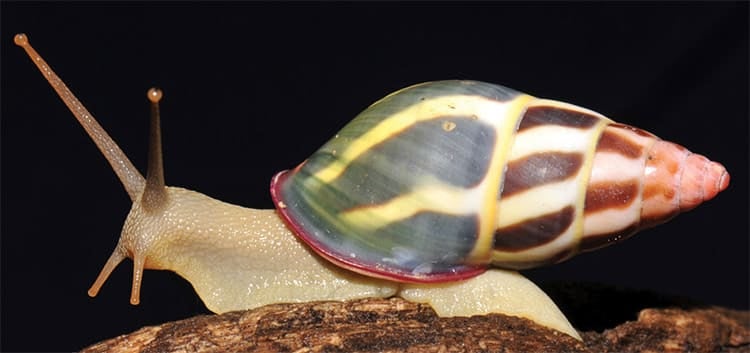
Arboreal Snails
Quite a few snails have evolved an arboreal life style, meaning they live and feed on trees, often in the canopy. Many tropical species spend their entire lives roaming the boughs and branches of a single tropical tree. Tree living snails tend to be brightly coloured and many are very beautiful. The genus Amphidromus, found from India across tropical Asia and into northern Australia, contains about 90 species of arboreal snails. The shells of many of these species are highly sort after by shell collectors because of their beauty, and because they often contain sinistral as well as dextral coiling individuals.
Arboreality as a way of life is more common in the tropics and subtropics. In temperate climates arboreal species need to leave their tree and seek the soil in order to survive the winter. A good example of this is the Japanese species from the southern part Hokkaido Island Euhadra brandtii.
Trees provide a good habitat for snails, especially in the warmer parts of the world. While the leaves, especially new leaves, of a tree may be an abundant food source many tree snails feed on the lichens and mosses that grow on the trees. Studies on Acavus haemastoma in Sri Lanka have shown that it preferentially feeds on lichens in it natural habitat, although it appeared to prefer pumpkin in laboratory experiments.
Arboreality has other benefits as well, firstly it means a species no longer has to compete with other terrestrial, ground living gastropods. Secondly one of the major predators of terrestrial snails are carabid beetles (see Snail Predators). Choosing to live high in the trees can greatly reduce the predation pressure from carabids. While the adults can and do climb into the trees at night to hunt the more numerous larva are usually restricted to foraging at ground level.
Human Mediated Distribution of Invasive Species
Human beings are changing the world in ways no other species has. This process of anthropogenic change to the global environment is on-going and may even be accelerating. The more obvious methods and forms of change involve altering the surface of the planet through activities such as deforestation, river damming, wetland draining, road building, mining, farming and city construction (as well as through war). The balance of environments is also radically changed through human hunting, and more recently though efforts to conserve, protect and even reintroduce extirpated species.
A less obvious, to some people, form of human mediated change is the redistribution of species. Human beings have been doing this inadvertently as long as they have been moving around the planet. As our technology has progressed so we have moved more and more species around, sometimes deliberately, sometimes accidentally. Gastropods have always been a part of this process. The Global Invasive Species Database (GISD) list has 16 gastropods listed as highly invasive species.
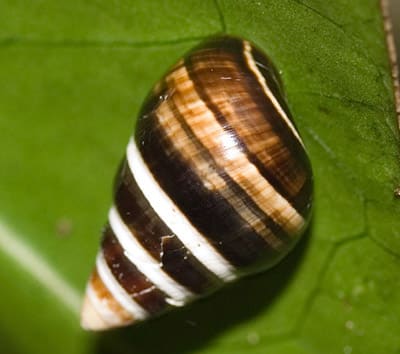
While many snails can reach maturity in less than one year and produce very large numbers of eggs that ensure a strong population, this is not true of all species. Many of the species on the endangered list have slower life cycles and lower fecundity. For example Achatinella mustelina, is a tree-snail species found only in Waianae mountain range on the island of O’ahu, Hawaii. This species exhibits slow growth rate and late maturity (3-5 years from birth to reproductive maturity). A. mustelina is a species that gives birth to live young and species fecundity is estimated at about seven offspring per adult per year. Population growth typically depends on considerable longevity (> 10 years).
Species such as the A. mustelina can have great difficulty surviving the increased predation pressure that results when foreign predators are introduced to their specialized habitats.
Highly Invasive Gastropod Species
Three species of gastropod (and three bivalves also) feature in the GISD list of the world’s 100 most invasive species. Euglandina rosea Rosy Wolf Snail, Lissachatina (Achatina) fulica The Giant African Land Snail and Pomacea canaliculata Golden Apple Snail. Two of these species, E. rosea and P. canaliculata were deliberate human interventions. The first in an effort to control the Giant African Land Snail and the second as a potential food item into Asia. Other authorities list other species, and include other gastropods, such as Rapana venosa Asian Rapa Whelk in their top 100 list.
However, many more species than this have been introduced to various habitats around the world. The species listed on the 100 list only become designated as “invasive” if they become a serious problem. Other species that merely survive in the introduced habitat are not included. In a paper published in 2001 Robert H. Cowie lists 82 species of terrestrial gastropods that have been introduced to the Hawiian Islands.
According to the Florida Museum website “The Hawaiian Islands once had over 800 different types of snails. Scientists estimate that nearly half have been lost to extinction in recent history, due to predation by introduced species and habitat loss.” By any method of consideration this is an ecological disaster. Furthermore, in 2019 an inventory of the invasive/introduced species of molluscs in Mexico was published. It lists 31 terrestrial, two freshwater and two marine species of gastropods that have been introduced to Mexico. Another study published in 2011 lists 34 alien gastropod species now found in South Africa.
How Do Introductions Happen?
In the marine environment modern shipping is the major source for the introduction of exotic species globally. The taking on, and discharging of coastal waters as ballast by thousands of ships every day has facilitated the spread of numerous marine species with planktonic larva. This includes a number of species of marine gastropods such as the Japanese oyster drill Ocinebrellus inornatus, which is now considered a serious pest in European oyster farms.
Freshwater snails are routinely inadvertently introduced mainly through the aquarium trade in association with aquatic plants and freshwater fish.
Accidental introductions also occur with aquaculture, as fouling organisms on ships and boats, and through the construction of canals or other modifications of existing waterways The most of the successful colonizers have been pulmonates. Several parthenogenetic species such as Potamopyrgus antipodarum, where a single individual can be all that is needed establish a viable population, have also been successful colonizers.
Introduced taxa often flourish in new environments where they can end up outnumbering, or eliminating native species. Although inadvertent introductions are far more common, deliberate introductions have been the most successful and typically the most harmful to native faunas, as a some effort is usually made to ensure their success.
As with accidental introductions, deliberate introductions have occurred commonly through the aquarium trade. But freshwater snails have also been introduced intentionally for use as food and as biocontrol agents for invasive aquatic plants and for vectors of disease. Deliberate introductions have been carried out with little or no thought of the impact on native species, rarely with pre-release testing or post-release monitoring of non-target impacts. Consequently, some exotic species (notably Pomacea canaliculata) have become serious pests in Asia, adversely impacting agriculture (rice, taro production) and/or native faunas and floras through predation and competition.
Invasive Gastropods – Final Thoughts
The immense damage being done to the numerous ecosystems around the world by introduced species, including many gastropods, is not a feather in humanity’s cap. Rather it is a dire reminder of how casually destructive our failure to understand the complexity and balance of the world we live in is. It does not need to be like this. We could learn, as a species, not just as a few isolated scientists, to exercise restraint over our brilliantly creative minds and to put understanding the world we live in at the top of our “to-do” list.
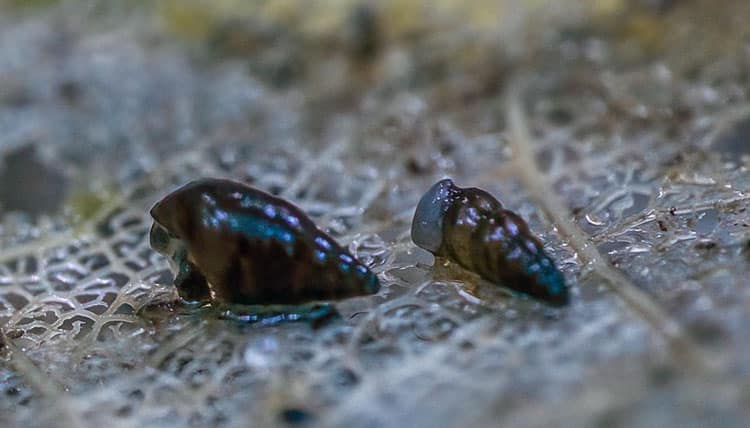
Gastropod Life Styles in a Changing World
Anthropogenic change in the global environment inevitably impacts other animals besides humanity. Pollution is usually a local even to some degree and so the effects of any particular incident of pollution, whether ongoing or episodic are also local. However, changes in temperature in all three habitats that gastropods inhabit and changes in the acidity and salinity of marine waters are all much more global.
Gastropods are as negatively effected by pollution as any other traditionally more newsworthy creatures. Furthermore, as in all ecosystem dynamics, the effects of pollution can be cumulative and multiplied for species higher in the hierarchy of feeding. The result of this is that larger predators accumulate greater toxicity burdens than the more lowly herbivores.
One of the least studied aspects of pollution is salinization of freshwater habitats. This happens when there is an increase in the total dissolved solids (TDS) in a freshwater habitat. A major cause of this problem is run-off from mining activity. Increasing salinity results in the elimination of sensitive taxa and their replacement by eurytopic species (species with a wider range of environmental tolerances). Salt-tolerant species, including alien invasive species are able to become much more abundant as a result of the lack of competition. This may eventually result in the gastropod community became monospecific, meaning there is only one species left living in the habitat. As of 2018 there was globally, no legal control of the degree of salinization of freshwater habitats.
The chemicals humanity so casually releases into the environment can have quite drastic effects on gastropod populations. The disastrous effects of Tributyltin from antifouling paints have already been explained in the page on Gastropod Reproduction.
The Freshwater Gastropod’s Perspective
Fresh waters represent only a very small portion, 3%, of the Earth’s waters, of which only 0.3% is actually fresh water habitats. The remaining 2.7% is ice, snow, groundwater and soil moisture. However, because of their segregated distributions, this 0.3% of the world’s water often represents a high species diversity. Among gastropods, fresh water habitats support about 5% of the world’s gastropod fauna, despite this they account for about 20% of recorded mollusc extinctions. However, sadly, dues to the large numbers of species and a shortage of scientists, the status of the great majority of taxa is still unknown.
Fresh water habitats are among the most vulnerable on the planet. The world’s freshwater gastropod fauna (as with all freshwater creatures) faces unprecedented threats from pollution and habitat loss as well as from introduced fishes and other pests species. Unsustainable use of fresh water resources, landscape modification (damming, draining and conversion to farmland), pollution and stock damage are destroying many streams and springs in rural/ pastoral areas, and pose the most significant threats to the large diversity of all freshwater animals, including many gastropods.
Globally, wetlands are vanishing three times faster than forests, and freshwater vertebrate populations have fallen more than twice as steeply as terrestrial or marine gastropod populations. Since 1900 the world has lost more than 70% of its global wetlands, while the populations found in freshwater habitats have suffered a decline of 84%. Actions to safeguard freshwater biodiversity and freshwater habitats this century the have been “grossly inadequate” according to the Living Planet Index, 2018.
Global Environmental Changes
Many species of animals are highly adapted to the specifics of the habitat they live in. Changing the parameters of their every day environment can have many consequences, sometimes negative, but also sometimes positive.
Changes in temperature can have direct effects such as causing heat stress. In heat stress an animal’s biology is negatively impacted because it is forced to deal with temperatures outside its usual experience. Many gastropods deal with heat-waves by seeking sheltered areas to avoid the worst of the days heat. However this can only work when the excess heat is of a short duration. Indirect effects of global warming arise from the effects the warming has on plants the gastropods feed on. Usually this is a positive effect as the food source becomes richer and more abundant.
However, global warming and the resultant increase in marine water temperature is well known to negatively impact corals. Coral reef die-offs caused by small changes in temperature have recently become a major threat to ocean biodiversity because coral reefs support a huge diversity of life, including numerous gastropods, many of which feed on the corals. Obviously when a coral reef dies everything that depends on it for survival also dies.
Oceanic Acidification
In marine environments two other factors have a large potential to disrupt gastropod lifestyles, these are acidification and changes in salinity. Acidification is a global phenomenon caused by the increase of carbon dioxide in the atmosphere resulting in an increase of carbon dioxide in the oceans. It is possible it will have a negative effect on gastropods because their shells are made from calcium carbonate, which will dissolve in more acidic conditions. However a study published in 2018 suggests that this is not a problem for sublittoral and intertidal herbivorous gastropods yet.
Contrary to this a 2019 published study on pelagic gastropods and pelagic gastropod larvae found that 30% of the specimens examined over a three year period had shell damage, or integrity reduction resulting from oceanic acidification. Notably this study stressed that aragonite was more strongly affected by ocean acidification than calcite in gastropod shells. The study also found that juvenile and young individuals suffered more damage than larger adult specimens.
Oceanic Salinity
Changes in salinity can result from the melting of large amounts of polar ice which can reduce salinity and from desalination plants. Desalination plants remove fresh water from the ocean, leaving the alt behind, this can result in local increases in salinity. Most marine invertebrates are osmoconformers, meaning the maintain their body fluids at the same salinity as their environment, nevertheless changes in salinity of the surrounding environment can cause stress and effect metabolic processes. As might be expected, species that inhabit tidal pools have acquired ways of dealing with osmotic changes in the surrounding waters. To date no publications show that changes in oceanic salinity are negatively effecting gastropods.
Image Credits:- Cover Image Snails in a tree Jestin Peter, Janthina janthina by Lange, Peter de, Potamopyrgus antipodarum y Judi Lapsley Miller, – License CC BY-SA 4.0; Amphidromus fuscolabris by Khamla Inkhavilay et al.,Sphincterochila boissieri by Wilson, Epitonium billeeanum by Nhobgood Nick Hobgood, Theba pisana by Christian Ferrer, Zospeum tholussum by J. Bedek et al.,- License CC BY 3.0; Gigantopelta chessoia by Alex D. Rogersand Paul A. Tyler et al., – License CC BY 2.5; Achatinella mustelina by Gregory A. Koob, Achatinella perversa by William Swainson Public Domain

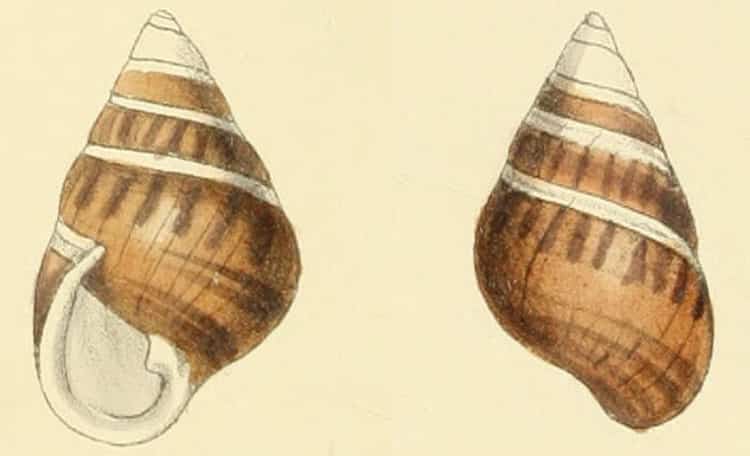
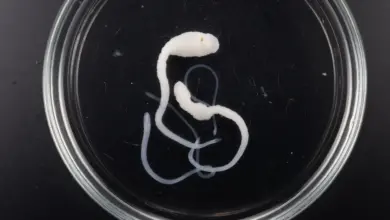
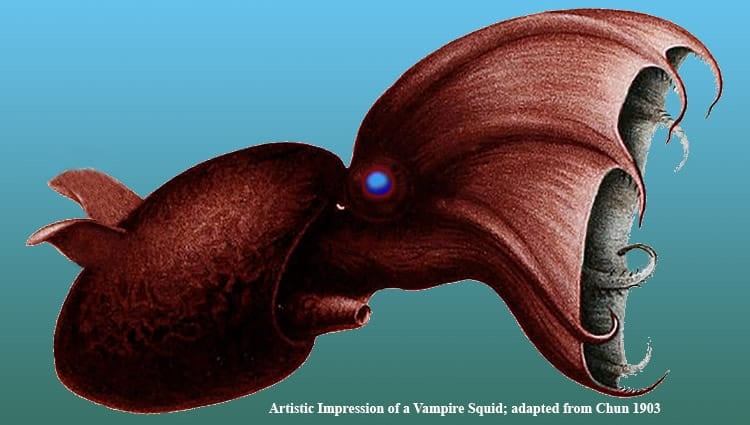


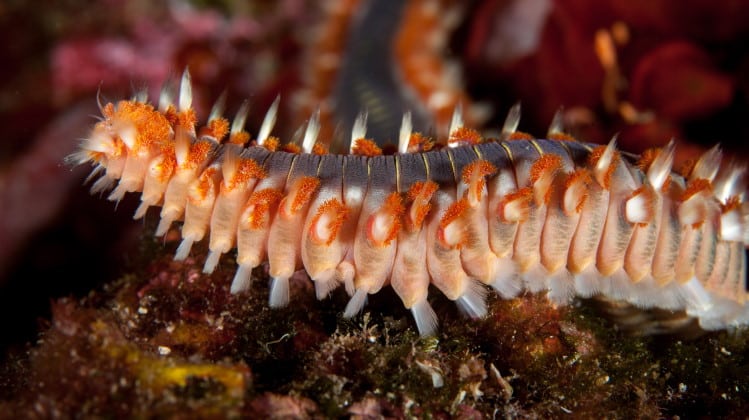
Good read: Why Fish Don’t Exist, by Lulu Miller?